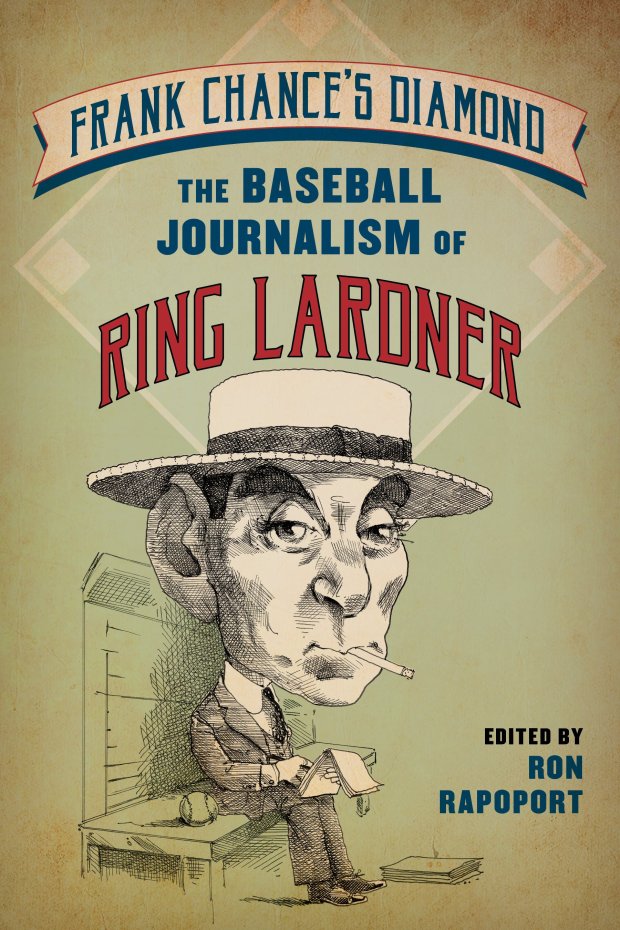[ad_1]
Names are being erased, even names as distinctive as Ring Lardner, who was once as popular, famous and influential as any writer of the 20th century.
His full name was Ringgold Wilmer Lardner, and he was the youngest of nine children born to a wealthy family in Niles, Michigan, in 1885. He began his writing career as a reporter for the South Bend Times, working for several newspapers here and elsewhere before settling at the Tribune, where in 1913 he took over the then-new “After the News” sports column, now in the capable hands of Paul Sullivan.
His specialty was baseball stories, and he was adept at capturing the players’ distinctive vernacular. It became so popular so quickly that a teenager named Ernest Hemingway, who wrote about sports in the newspaper at Oak Park and River Forest High School, sometimes referred to it as “Ring Lardner Jr.” He was using his signature.
Lardner was extremely productive. At the prompting of an editor, he wrote a story for the Tribune’s feature section. This anonymous – and not very bright – editor didn’t like it, so Lardner sold it to the Saturday Evening Post magazine, where it became a sensation.
It was called “A Busher’s Letter Home” and formed the basis for Lardner’s first book, “Take Me You Know,” a collection of stories from a series of letters written by a fictional major leaguer named Jack Keefe to his friend Al Blanchard. In their hometown in Indiana.
The book had a distinctive style – slang, singular nouns, and plural verbs all mixed together – and was a bestseller. Novelist Virginia Woolf called Lardner America’s finest prose writer, “even though his language is not English.”
Lardner left Chicago for New York in 1919; He started writing a column here and became very good friends of the literary community, including the people of the Algonquin Round Table, F. Scott Fitzgerald and his wife Zelda.
It was featured in more than 100 newspapers and reached an estimated 8 million people. He also wrote a steady stream of stories, many of which went well beyond the world of sports, including “The Golden Honeymoon,” “Some Like It Cold,” “A Day with Conrad Green” and “Haircut.”
He also wrote for the theatre. Some complained that he had not written a novel, thinking that he could produce a masterpiece. “But he had no interest in novels,” writes author Ron Rapoport. “After one chapter, he wrote to his son that he would be ‘more bored with the reader.’”
During the last, harrowing seven years of his life, which ended in 1933 when he was just 48, he suffered serious heart problems and was in and out of hospitals.
As Rapoport writes in his illuminating and entertaining new book, “Frank Chance’s Diamond: The Baseball Journalism of Ring Lardner,” he was “one of the most famous people in the United States in his day, on a par with Charles Lindberg. And he was far greater than any journalist before or since the stories he covered.”
This book gives us plenty of examples of his style, and although we encounter familiar names like Ruth, Ty Cobb, and Casey Stengel, there’s a lot to be gained from “meeting” characters like Heinie Zimmerman and Peaches Graham.
“This was a time when actors and writers were friends, traveling on trains together,” Rapoport says. “The ring players loved it and they loved it.”
Does that name – Ron Rapoport – ring a bell? He should be, as he was a sports columnist for several decades at the Chicago Sun-Times and later at the Los Angeles Daily News. He has written numerous books, including sports-related stories, some about golfer Bobby Jones and 2019’s “Let’s Play Two: The Legend of Mr. Cub, The Life of Ernie Banks,” as well as entertainment-based books like 2008’s “Tim.” and Tom: An American Comedy in Black and White” follows local men making it big, including Tom Dreesen and Tim Reid.

He had been a contributor to NPR for decades and was honored with the locally based Ring Lardner Awards for Excellence in Sports Journalism in 2016; This award was created to honor talent in three categories: broadcast, print and posthumous. Rapoport’s response: “I couldn’t be more honored, I couldn’t be more happy.”
At the time, he was about to publish “The Lost Journalism of Ring Lardner,” a fine book like this new book by Lardner that focuses firmly on baseball journalism.
“Finding these stories was a serious treasure hunt,” says Rapoport. “Ring never kept copies of his work, and I spent many, many hours combing through old newspapers from around the country. “I had never read Lardner as a young sports reporter, but I came to appreciate his worldview and energy.”
He was even more impressed and said, “Ring never gave up journalism and never stopped writing about baseball, even when he was writing his wonderful short stories. Believe me when I say that no one has written about gaming the way Ring has. “Sometimes it was hard to tell where their news ended and their stories began.”
By bringing Lardner from under the dust of history to the light of day, Rapoport has done a great service to all who love words.
rkogan@chicagotribune.com
 Best American Comics News bestamericancomics.com started its broadcasting life on December 21, 2022 and aims to offer original content to users. Aiming to share information in technology, science, education and other fields, bestamericancomics.com aims to provide its readers with the most up-to-date and comprehensive. Since the content of the site is created by expert writers, readers are reliable and accurate referrers.
Best American Comics News bestamericancomics.com started its broadcasting life on December 21, 2022 and aims to offer original content to users. Aiming to share information in technology, science, education and other fields, bestamericancomics.com aims to provide its readers with the most up-to-date and comprehensive. Since the content of the site is created by expert writers, readers are reliable and accurate referrers.


